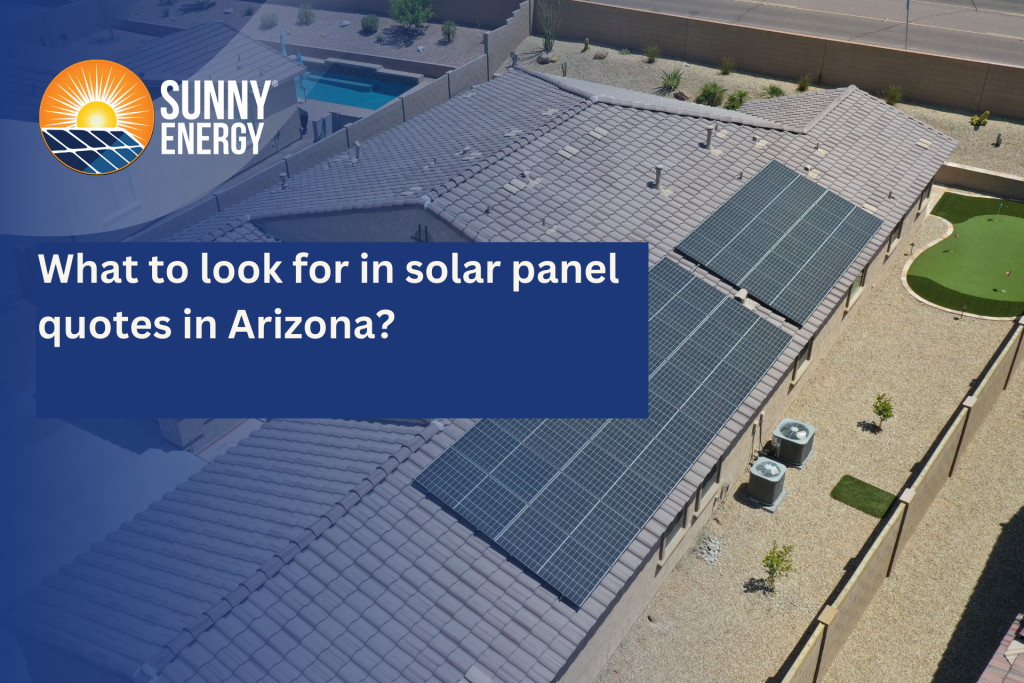As more homeowners are turning to solar energy to power their homes, the need for compatible solar panel installations on different types of roofs has become increasingly important. One common roofing material found in many homes, especially in warmer climates like Arizona, is tile. Installing solar panels on a tile roof offer durability and aesthetics, but they also present unique challenges for installing solar panels on a tile roof.
In this guide, we will explore what you need to know before installing solar panels on a tile roof, including the unique aspects of lightweight solar panels on a tile roofs, installation methods, benefits of inset installations, and compatibility with different types of solar panels on a tile roof.
What to know before installing solar panels on a tile roof?
Before diving into the specifics of solar panels on a tile roof, there are a few key considerations to keep in mind:
1. Roof condition:
Assessing the condition of your tile roof before installing solar panels is critical to ensure the longevity of both your roof and solar system. Any existing damage, such as cracked or broken tiles, should be repaired or replaced. This not only prevents potential leaks but also provides a solid foundation for the solar panel mounting system. Check for signs of wear, such as loose tiles help identify areas that may need reinforcement before installing solar panels.
2. Weight capacity:
Solar panel on a tile roof have specific weight limitations that must be considered when installing solar panels. Lightweight tiles, which are often used in newer constructions or renovations, typically have lower weight capacities compared to traditional tiles.
3. Permitting and regulations:
Before installing solar panels on a tile roof, it’s important to comply with local permitting requirements and regulations. This typically involves obtaining permits from your local building department and ensuring that your installation meets all relevant building codes and regulations. Failure to comply with these requirements can result in fines or the need to remove the solar panel system.
Additionally, some homeowners’ associations (HOAs) may have specific guidelines regarding solar panel installations. Working with a reputable solar installer can help ensure that your installation meets all necessary permitting and regulatory requirements.
What roofs are not suitable for solar panels?
When considering solar panel installation, it’s important to assess whether your roof is suitable for this purpose. Some roofs may not be ideal for solar panels due to various reasons. Here are some common types of roofs that are not suitable for solar panels:
1. Shaded roofs:
Roofs that are heavily shaded by trees, nearby buildings, or other obstructions may not receive enough sunlight to make solar panels efficient. Shade can significantly reduce the energy output of solar panels, making them less effective.
2. North-facing roofs:
In the northern hemisphere, north-facing roofs receive less direct sunlight compared to south-facing roofs. While solar panels can still be installed on north-facing roofs, they may be less efficient in generating electricity.
3. Old or damaged roofs:
Solar panels are typically installed for 25 years or more. If your roof is old it may need to be repaired before solar panels installed to ensure they are properly supported and protected.
4. Roofs with obstructions:
Roofs with vents, chimneys, or other obstructions may have limited space for solar panel installation. Additionally, these obstructions can cast shadows on the panels, reducing their efficiency.
5. Roofs with a steep pitch:
While solar panels can be installed on roofs with a steep pitch, they may be more challenging to install and maintain. Additionally, the angle of the roof pitch can affect the efficiency of the panels, as optimal angles vary based on location and season.
6. Roofs with limited space:
Solar panels require a certain amount of space for installation. If your roof is small or has limited space due to architectural features, it may not be suitable for solar panels.
It’s important to consult with a solar energy expert to assess your roof’s suitability for installing solar panels. They can evaluate factors such as shading, roof orientation, and structural integrity to determine if solar panels are a viable option for your home or building.
What is unique about solar installations on lightweight tile roofs?
Solar installations on lightweight tile roofs require careful consideration due to the specific characteristics of these roofing materials. Here’s a detailed explanation of what makes these installations unique:
1. Roof weight:
Lightweight tile roofs are designed to reduce the overall weight of the roofing structure compared to traditional tiles. While this can be beneficial for the overall building structure, it also means that these roofs have lower weight capacities. This limitation requires the use of lightweight solar panels and mounting systems to avoid exceeding the roof’s weight limits.
2. Mounting systems:
Installing solar panels on lightweight tile roofs requires specialized mounting systems that are compatible with the roof’s lightweight nature. These mounting systems are designed to distribute the weight of the solar panels evenly across the roof’s surface, reducing the risk of damage or stress on the roof tiles.
3. Solar panel selection:
When installing solar panels on a tile roof, it’s essential to choose panels that are specifically designed to be lightweight. These panels are typically made from materials that are lighter than traditional solar panels, such as thin-film solar cells or lightweight frame materials.
4. Installation techniques:
The installation process for solar panels on a tile roof differs from that of traditional roofs. Installers must take extra care to ensure that the mounting systems are securely attached to the roof without compromising its integrity. Additionally, installers may need to reinforce certain areas of the roof to provide additional support for the solar panel mounting hardware.
5. Maintenance considerations:
Due to the lightweight nature of the roof tiles, regular maintenance of the solar panel system is essential to ensure its longevity. This includes inspecting the roof for any signs of damage or wear and ensuring that the mounting hardware is secure. Overall, solar installations on lightweight tile roofs require careful planning, specialized equipment, and expertise to ensure a safe and successful installation. Working with a professional solar installer who has experience with lightweight tile roofs can help ensure that your solar panel system is installed correctly.
How do you install solar panels on tile roofs?
Installing solar panels on tile roofs involves several steps to ensure a safe and efficient installation. Here’s a detailed explanation of the process:
1. Roof inspection:
Before installing solar panels on a tile roofs, a thorough inspection of the tile roof is conducted to assess its condition. This inspection helps identify any existing damage or wear that needs to be addressed before installation. It also helps determine the best placement for the solar panels to ensure optimal sunlight exposure and minimize shading.
2. Mounting system installation:
Specialized mounting systems designed for tile roofs are used to secure the solar panels in place. These mounting systems are typically made from durable materials like aluminum or stainless steel to withstand the elements. The mounting systems are installed directly onto the roof, with care taken to ensure that they are securely attached and do not damage the roof tiles.
3. Flashing installation:
Flashing is installed around the base of the solar panels to create a watertight seal and prevent leaks. Flashing is especially important on tile roofs, as the tiles can create irregularities that require custom flashing solutions.
4. Panel installation:
Once the mounting system and flashing are in place, the solar panels are installed on the roof. Installers carefully place the panels to ensure they are properly aligned and securely attached to the mounting system. The panels are then wired together and connected to the electrical system of the home.
5. Electrical connection:
After the panels are installed, the electrical components are connected. This includes connecting the panels to an inverter, which converts the solar energy into usable electricity, and connecting the inverter to the home’s electrical system.
6. Testing and inspection:
Once the installation is complete, the system is tested to ensure it is functioning properly. An inspection may also be conducted to ensure that the installation meets all safety and regulatory requirements. Overall, installing solar panels on a tile roof requires careful planning, specialized equipment, and expertise to ensure a safe and effective installation. Working with a professional solar installer ensure that your solar panel system is installed correctly.
What are the benefits of an inset solar panel installation?
Inset solar panel installations offer a range of benefits. Here’s a detailed explanation of these benefits:
1. Aesthetics:
One of the primary benefits of inset solar panel installations is their visual appeal. Unlike traditional surface-mounted panels, which can be bulky and obtrusive, inset panels are installed flush with the roof’s surface.
2. Durability:
Inset solar panels are less exposed to the elements than surface-mounted panels, which can increase their lifespan and reduce maintenance requirements. By recessing the panels into the roof, they are more protected from wind, rain, and other weather conditions that can cause damage over time.
3. Energy efficiency:
The recessed design of inset solar panel installations can also improve the energy efficiency of the home. By providing an additional layer of insulation for the roof, inset panels help reduce heat loss in the winter and heat gain in the summer. This results in lower energy bills and a more comfortable indoor environment.
Can solar panels be placed on a clay tile roof or a concrete tile roof?
Installing solar panels on clay or concrete tile roofs requires careful planning and expertise. Due to the unique characteristics of these roofing materials. Here’s a detailed explanation of the process:
1. Specialized mounting systems:
Clay and concrete tile roofs require specialized mounting systems designed to securely attach solar panels without damaging the tiles. These mounting systems are typically made from durable materials like aluminum and are designed to distribute the weight of the panels evenly across the roof’s surface.
2. Installation techniques:
Installing solar panels on a tile roof requires specialized techniques to ensure a secure and watertight installation. Installers must lift the tiles to install the mounting system without damaging the tiles. Once the mounting system is in place, the tiles are carefully reinstalled around the solar panels to create a seamless look.
3. Waterproofing:
Proper waterproofing is essential when installing solar panels on a tile roof to prevent leaks. This includes using flashing and sealants around the base of the solar panels to create a watertight seal. Installers ensure that mounting system is securely attached to the roof to prevent water from seeping underneath the tiles.
4. Professional installation:
Due to the complexity of installing solar panels on tile roofs, it’s important to work with a professional solar installer. They will have the knowledge and expertise to ensure that the installation is done correctly. While solar panels can be installed on clay and concrete tile roofs, it requires specialized equipment, techniques, and expertise to ensure a successful and durable installation.
Conclusion
Installing solar panels on a tile roof requires careful planning and expertise to ensure a successful and durable installation. By understanding aspects of installing solar panels on a tile roof you can enjoy the benefits of solar energy. Sunny Energy, a leading Arizona solar company specializes in installing solar panels on a tile roof. With years of experience and expertise as an Arizona solar contractors Sunny Energy understands the unique challenges and requirements of tile roofs. They use specialized mounting systems and installation techniques. To ensure a secure and effective solar panel installation without compromising the integrity of the roof.
When installing solar panels on a tile roof, it’s crucial to work with a professional installer and best solar company in Arizona like Sunny Energy. They will conduct a thorough assessment of your roof to determine the best placement and mounting method for the panels. Additionally, they will ensure that the installation meets all local building codes and regulations. By choosing Sunny Energy for installing solar panels on a tile roof, you can have peace of mind knowing that your tile roof is in good hands. Their team of experts will handle every aspect of the installation process. From design to maintenance, ensuring that you get the most out of your solar energy system.






